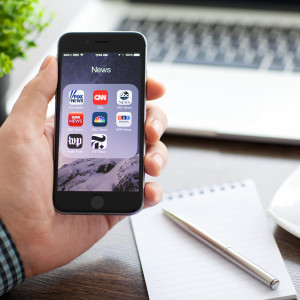Delve into your bank account or find a credit card that isn’t maxed out and do it. You know you want to. You know you must. You know you can’t resist. You want, must have, to hell with the expense, the latest cell phone.
Of course, the cell phone you have is perfectly good and does everything you want. That isn’t the point. When you are in need of a technology fix, utility isn’t a consideration.
Your old cell phone, truth be told, was such a whizzy little computer that you could ask it to read your email aloud or you could surreptitiously enjoy watching old television shows like “Mister Ed.” Now it must be cast out. You have read the CNET review which details pixel counts, camera capacity, and battery longevity. The new phone, the one that you may have to raid your child’s college fund to acquire, is a must-have.
Here is a tip: Google until you are bug-eyed. It is lazy just to buy the top Android from Samsung or the latest iPhone from Apple. There are about 120 companies making cell phones. There are a dozen you can buy without going to China.
Imagine if you have a phone that is unique, the opportunity for one-upping your pals is limitless. Think of these conversations just waiting:
“Bill, is that a new iPhone? I just bought a Blankety Blank. Actually, it is superior. You should see how I mapped a trajectory for a Mars flight on it.”
Or “Susan, you got the latest from Samsung? I guess it is great, but I really need extra functions. I can shoot and edit a feature film on this little beauty from Blankety Blank. It writes the script, too.”
Warning: When you have made one of these asinine comments, move away.
You can spend more than $3 million on a cell phone. An Australian businessman commissioned such a phone. It was replete with a 22-carat gold case, rubies, and diamonds. I wonder what it weighed. More, I wonder if it worked. I don’t expect to find that model at Walmart. But don’t be downcast, if you have just $2.5 million to blow on a phone, there are several in your price range. Of course, these have nothing to do with telephony, they are pure fashion — like those watches that cost millions and are made in Switzerland, the home of great watches, with humble, Chinese-made moving parts.
Even if you hold onto your old instrument or buy the latest, it seems the one thing you won’t be doing is making phone calls.
We are living in the post-phone age. If, God forbid, we are to speak to someone on the phone, an appointment has to be set up by email or text (a cell phone capacity actually used). So a simple phone call becomes work, something to cause tension, apprehension, dread. I don’t think anyone ever made an appointment to call you to tell you that you are coming into money or to tell you they have accepted your marriage proposal.
I have lived through the ages of the telephone, as defined by an instrument connected to similar that enables you to talk to someone else.
The first age was the party line. I call it the public line because you could listen to anyone on the same line.
Then there was the age of the rotary. Dial, dial, dial. If, like me, you had to make a lot of phone calls, it was hell. We had pencils with rubber-blob ends to insert into the dial to ease the finger labor. The pushbutton was nirvana. A huge advance in user-friendliness.
Then came the age of the answering machine. It was the thin end of the wedge which subtracted years from lives because it led inexorably to those automatic phone systems that won’t let you speak to a human being, whether it is a doctor or a manager about your, yes, telephone account.
No doubt there will be sociologists writing about the death of talking on the telephone. I, for one, always loved a ringing telephone, before robocalls, of course, because that call might be something that, as Omar Khayyam said, transmutes “life’s leaden metal into gold.”
Sometimes phone calls (RIP) did that.

